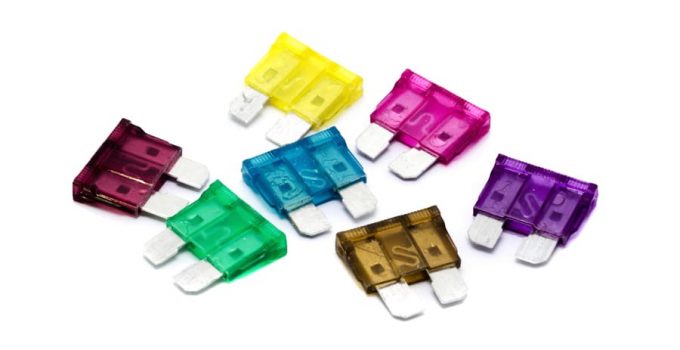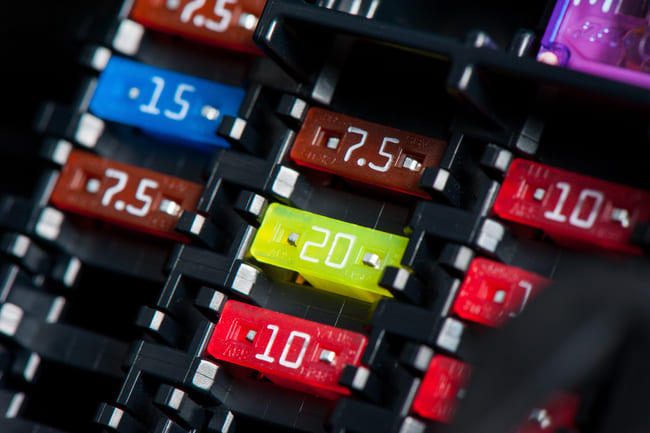
Today's modern vehicles convince more and more with technical top performance. Be it the emergency brake assistant, which ensures automatic emergency braking if the radar unit detects an approaching object, or the door protection, which only allows a door to be opened when traffic is free, and the parking bump alarm, which then sounds an alarm , if a car is just bumped into in the parking lot. These are just a few examples of the latest inventions for modern vehicles. But technical systems and units that have been installed in cars for years are also part of the electrical system. Windshield wipers, car lighting, air conditioning, heating, ignition locks, electric exterior mirrors, cigarette lighters and numerous other systems that are operated electrically can be mentioned here. All in all, it becomes clear that a vehicle – no matter whether it is a modern one or an oldtimer or youngtimer – clearly depends on faultless functioning of the electrical system. If problems occur with the electrical system or electrical units, it does not always have to be a direct defect in the unit. It could also be a blown fuse. Because the task of this component is to protect the circuit when there is an overvoltage in the vehicle. Burnout happens without warning, but this can be easily remedied by replacing the part.
In fact, blown fuses are one of the most common reasons why vehicle electrical devices and units suddenly stop working properly. But what can you do about it? The best course of action would be to regularly inspect the components in the vehicle. If defects are found, said fuse should be replaced. You can do this yourself with a bit of skill and basic knowledge. In the following we would like to explain how blown fuses are detected, how to replace them and what the costs are.
Contents
How can fuses in cars be checked?

The first step you would have to take here would be to locate the fuse box. This can be found in different places depending on the vehicle model and manufacturer. But a look at the vehicle's manual will quickly tell you where to find it. This box is often located in the engine compartment or near the dashboard. In some cases, fuse boxes can also be found under the passenger seat or driver's seat. If the fuse is defective, this is usually visually recognizable. The plastic insulation is then blackened or charred. But the metal wire inside can also be torn. Otherwise, the multimeter can provide insight into the condition of the part if you don't have the knowledge to inspect the component yourself. You can now easily test whether current is flowing: connect the multimeter to the part using probes. If a value of 1 is displayed, you have a burned out component. However, if the value is below 1 and close to 0, then you can assume that current is flowing.
The fuse is broken – how can this be exchanged?
If you have some basic knowledge in terms of technology or car mechanics and have a bit of manual skills, you can carry out this process yourself and do not necessarily have to contact a workshop.
In the following we go through the steps to consider when replacing the part.
- Locate the fuse box in your vehicle. Your vehicle handbook will tell you where it is.
- Check visually whether the component is burned out or not. If you don't want to or can't believe your eyes, a multimeter will help you at this point and can provide information about the condition of the fuse.
- Be sure to disconnect the car battery before you proceed any further. Otherwise, your work could end up with a nasty electric shock.
- The burned-out component should now be removed using pliers. Be careful not to damage the adjacent fuses, as this can quickly happen.
- Now you should place the new component between the spring terminals.
- Finally, only the connection terminals need to be tightened.
What type of backup do I need and what are the costs?

Of course, before you start the replacement process, you need to know what type of fuse is actually needed. So how can I tell if I'm buying the right component? And what do I have to pay?
More detailed information can usually be found in the vehicle manual. In general, however, the following always applies: the color and caliber of the fuses must match. So an old one has to be replaced with a new one that has the same caliber and color. The color code is always based on the DIN 72581 standard. Make sure that the caliber and color actually match. If you are careless here and insert the wrong component in the fuse box, this can, in the worst case, cause a short circuit in the vehicle's electronic system. In some cases, fire is also possible. As for the costs you're going to face, you can get away with it quite cheaply at this point. The backups themselves only cost a few euros if you want to carry out the process yourself. But even those who take help in a workshop will not have to pay much more. These services are done quickly and therefore don't cost much.
The conclusion and a tip from CarTipsandmore
In the end, the following can be stated: fuses and the fuse box are indispensable in a vehicle. These small components protect the electrical circuit in the vehicle in the event of an overvoltage. In this way, a short circuit can be avoided. So if various electrical devices fail without warning, this can simply be due to a blown fuse. This is checked by opening the fuse box and carefully inspecting the parts. If this is not sufficient for a concrete assessment, a multimeter can provide assistance and check whether current is still flowing. If a defect has now been found, the replacement can also be carried out by DIY work. However, if you do not have any experience, you can alternatively contact specialists in a workshop. In any case, you do not have to reckon with high costs. At this point, CarTipsandmore advises you to buy replacement fuses in a fuse set. Then you are adequately equipped for every situation, no longer have to run errands and can get to work straight away.
